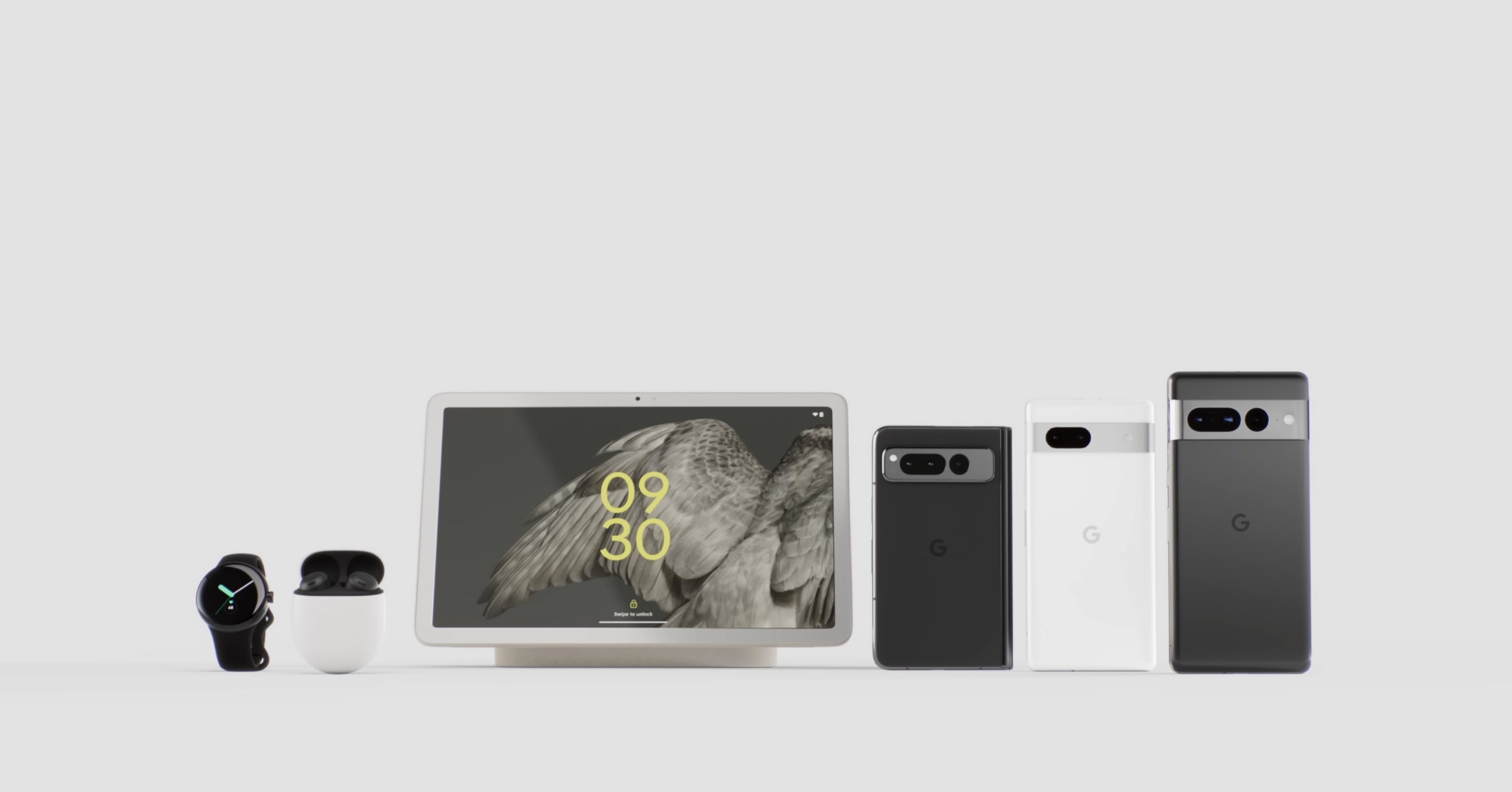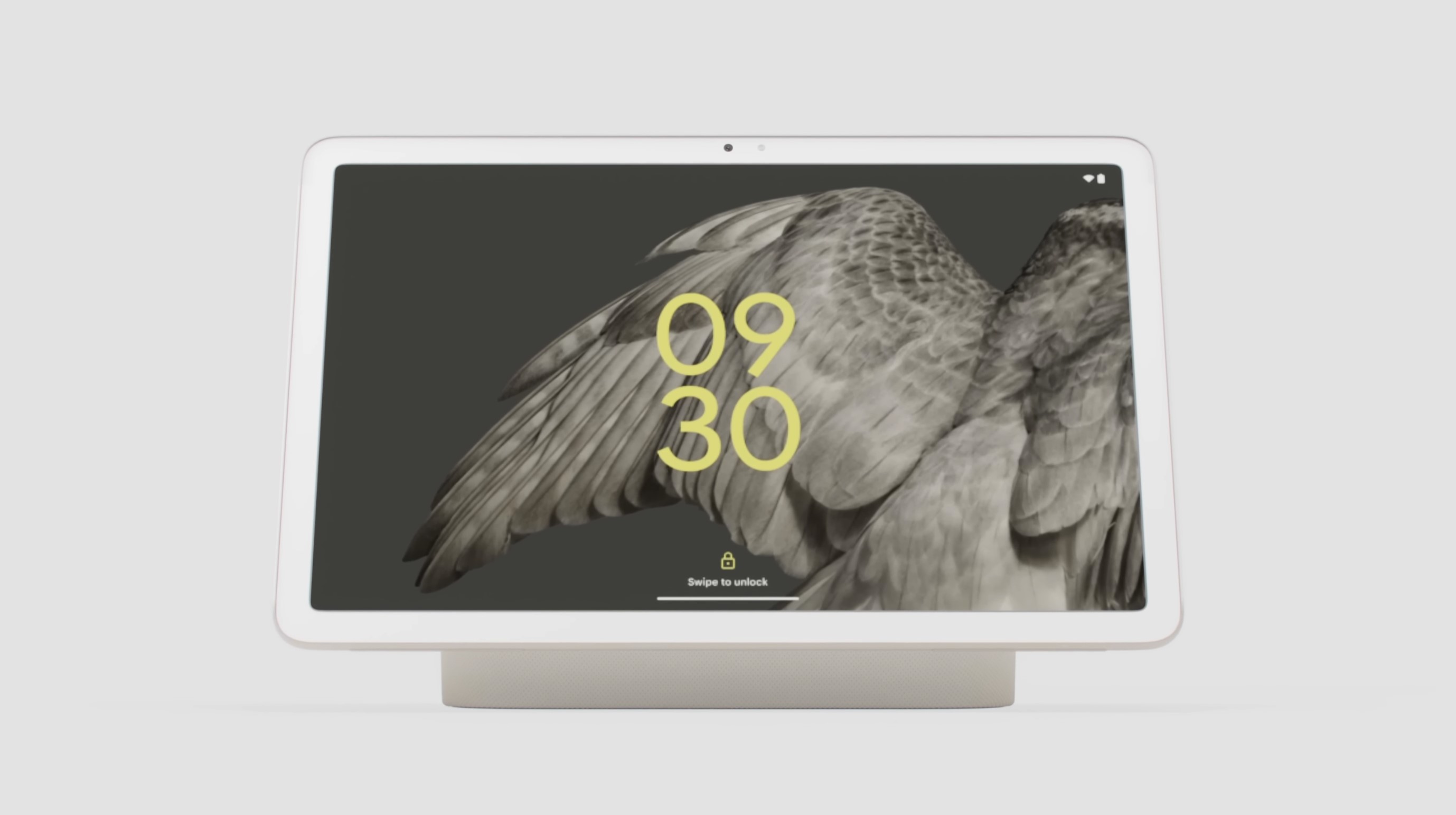New hardware presented at Google I/O

Lots of AI
Just as the trend of the time suggests, there was naturally a lot of AI on the program. It was not long ago that Google presented their Bard, which had to take on other AI models on the market such as ChatGPT.
At I/O, Google presented a large number of fields where the integration of AI can improve functionality and provide better workflows. It's across many of Google's services from their regular Google searches over their apps, like Docs, Sheets and Slides. There are, for example, functions such as AI generated spreadsheets or text and image suggestions.
All that went into the first hour and a half of the Keynote event for Google I/O. From here they switch over to a field that might be a little more exciting for some, namely new hardware.
Pixel 7a
The first thing on the table was the new Google Pixel 7a. The A series is one of Google's most popular series. You don't get quite the same high end specifications as on the top model like the Pixel 7 Pro. However, you get really far and of course at a good price, compared to the more expensive top models.
The new Pixel 7a is confusingly similar to the other Pixel 7 phones, albeit in the smallest version so far. You get a 6.1" Full HD OLED screen with a refresh rate of up to 90 Hz. The internals are powered by a Google Tenor G2 chip along with 8GB of RAM and 128GB of storage.
The battery is 4385 mAh, which unfortunately can only be charged with a rather sluggish 20W, which is really slow in a market where 100W is not abnormal.
The Pixel 7a is available in four colors at a price just under 400$.
Pixel Tablet
Just as the rumors leading up to I/O have mentioned, there were of course also larger units on offer. The first of them was the Pixel Tablet, which is Google's first take on a tablet.
It is a process that has been several years in the making. In that development, Google has thought a lot about how they can stand out in the market for tablets.
We see the most obvious part of that work in their charging stand, which is included if you buy a Pixel Tablet. It holds your Pixel Tablet magnetically while charging and simultaneously functions as a speaker.
By putting the Pixel Tablet on the stand, you turn it into a more regular screen, which can be used as a large version of Google's Nest Hub. There is a specific Hub Mode for all those functions. From here you can easily control your Smart Home devices, find recipes, watch movies or series and control your music playback, which can be heard on the larger speaker built into the stand.
All that, while you can still easily access all your normal Android apps, if you want to get hold of something other than what is normally accessible on a Nest Hub.
If we look at the Pixel Tablet as a pure tablet, then it is an 11” tablet with an LCD screen with a resolution of 2560x1600 and a refresh rate of 60Hz. So that part of the hardware is unfortunately not particularly impressive.
The internal hardware is the same as we find in Google's Pixel phones. It is a Tensor G2 chip combined with 8GB of RAM and 128 or 256 GB of storage. So it is essentially a Pixel 7 phone with a large screen.

Google promises enough battery life for up to 12 hours of video streaming.
The price for the Google Pixel Tablet starts at 750$, and can be pre-ordered now and will arrive next month.
Google Pixel Fold
To round off the hardware part of the I/O event, we were also presented with the Pixel Fold, which is another area where Google is expanding this time with a foldable phone that will take competitors like Samsung to task.
The appeal of a foldable phone is of course the ability to have a larger screen when needed, but still in a device that can fit in your pocket. In other words, an intermediate point between a phone and a tablet.
The Pixel Fold can be folded out from a 5.8" outer screen, in a more normal Smartphone format, to the tablet format and in that state gives a 7.6" inner screen.
Both the inside and the outside screen are OLED with a refresh rate of 120 Hz. The resolution of the smaller outer screen is 1080x2092, while the resolution of the large inner screen is 2208x1840.
The internal hardware is powered by the same Tensor G2 chip that we find in the Pixel 7 phones. Here, however, it is paired with 12GB of RAM and either 256 or 512 GB of storage.
There are a total of five cameras on the Pixel Fold. There are three in the setup on the back with a 48MP optically stabilized main camera complemented by a 10.8MP ultrawide and a 10.8MP 5x telephoto.
It is rounded off with two 8.3 MP cameras, respectively above the front screen and the inner screen for selfies or video calls.
It's always interesting to see Google's take on "new" hardware. Pixel Fold unfortunately does not land in all on countries e.g. like the Danish market in the first place.
Latest smartphone
-
18 Febsmartphone
-
07 Jansmartphone
OnePlus 13
-
03 Decsmartphone
OnePlus 13 will launch globally in January 2025
-
25 Octsmartphone
OnePlus launches OxygenOS 15
-
17 Octsmartphone
OxygenOS 15 goes live on October 24
-
20 Sepsmartphone
Apple can be forced to open Siri
-
10 Sepsmartphone
A18 Pro chip in iPhone 16 Pro is 15 percent faster
-
10 Sepsmartphone
Apple's event brought lots of news.
Most read smartphone
Latest smartphone
-
18 Febsmartphone
OnePlus Watch 3 now hits stores
-
07 Jansmartphone
OnePlus 13
-
03 Decsmartphone
OnePlus 13 will launch globally in January 2025
-
25 Octsmartphone
OnePlus launches OxygenOS 15
-
17 Octsmartphone
OxygenOS 15 goes live on October 24
-
20 Sepsmartphone
Apple can be forced to open Siri
-
10 Sepsmartphone
A18 Pro chip in iPhone 16 Pro is 15 percent faster
-
10 Sepsmartphone
Apple's event brought lots of news.






